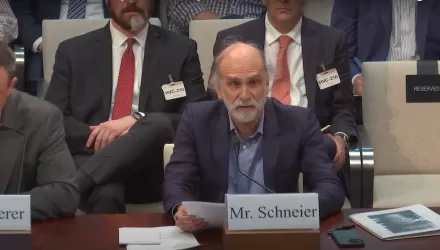
Summary
Section 702 of the Foreign Intelligence Surveillance Act (FISA) Amendments Act of 2008, a powerful surveillance tool that allows U.S. government agencies to spy on foreign persons to collect counter- terrorism intelligence, will expire on December 31, 2017 without Congressional reauthorization. This paper has two goals: to concisely describe how agencies obtain information under Section 702, and to provide guidance to legislators and their staffs by examining the core issues they will confront as they consider reauthorizing this legislation.
Under Section 702, government agencies can obtain judicial approval to conduct surveillance programs without seeking specific authorization for each individual or device they target. Instead, agencies develop procedures governing the selection of targets for surveillance, and the protection of information related to U.S. persons who are mentioned or whose conversations are incidentally captured by the surveillance. Even though Section 702 was intended to authorize collection of foreign person communications, the communications of U.S. persons are inevitably collected as well, and consequently government agents can (and do) query databases that contain incidentally collected Section 702 data for information about U.S. persons. Both the “targeting” and the “minimization” procedures are essential to ensure that the Section 702 program does not become a means to circumvent legal protections for U.S. persons.
Although there is extensive testimonial evidence that Section 702 surveillance provides crucial national security information, there are also significant concerns that the regulatory regime governing this surveillance is inadequate to address important privacy interests. If these issues are not addressed in the debate regarding Section 702’s reauthorization, Congress would miss an important opportunity to craft surveillance policies that ensure both national security and individual privacy. As shown in the chart below, each policy question identified by this paper can be addressed by Congress in a way that will preserve both individual privacy and national security to the greatest extent possible.
Boustead, Anne. “A Legislator's Guide to Reauthorizing Section 702.” Cyber Security Project, Belfer Center, August 20, 2017




